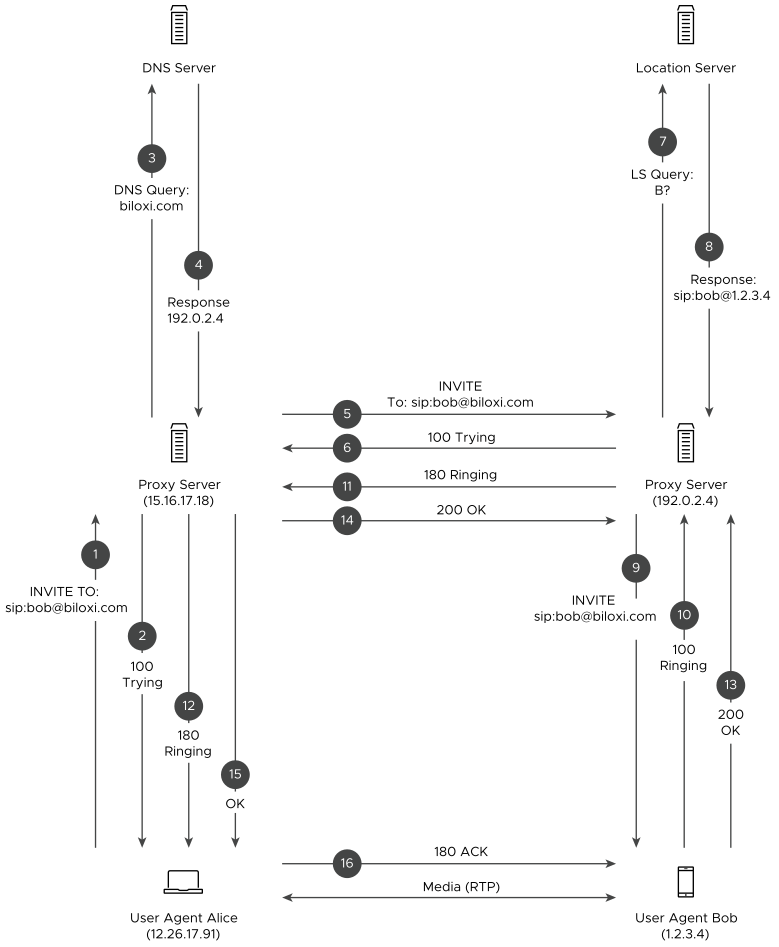SIP is an application-layer control protocol that establishes, modifies, and terminates multimedia sessions that work without any dependency on the type of established session and underlying transport protocols.
Sample SIP Call Flow
The following figure represents a sample SIP call flow:

The NSX Advanced Load Balancer supports traffic for SIP applications. The following are the features offered by NSX Advanced Load Balancer for SIP applications:
UDP proxy – SIP virtual service over UDP transport
TCP proxy – SIP virtual service over TCP transport
Health monitor – SIP options over UDP or TCP as configured
Load balancing – Consistent hash load balancing based on unique call ID
References
The following table provides a comprehensive list of links to documentation related to NSX Advanced Load Balancer support for SIP applications:
Documentation |
Title |
|---|---|
Deploying NSX Advanced Load Balancer for SIP applications |
|
Configuring Application profile for SIP applications |
See Application Profile topic in the VMware NSX Advanced Load Balancer Configuration Guide |
Configuring UDP proxy profile for SIP applications |
See TCP or UDP Profile topic in the VMware NSX Advanced Load Balancer Configuration Guide |
Monitoring SIP applications |
See SIP Health Monitor topic in the VMware NSX Advanced Load Balancer Configuration Guide |
Setting load balancing algorithm |
See Load Balancing Algorithms for GSLB topic in the VMware NSX Advanced Load Balancer GSLB Guide |
SIP Log |
See Step 3: Analytics topic in the VMware NSX Advanced Load Balancer Configuration Guide |